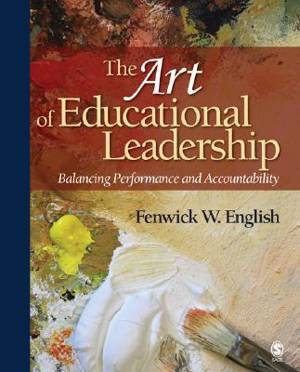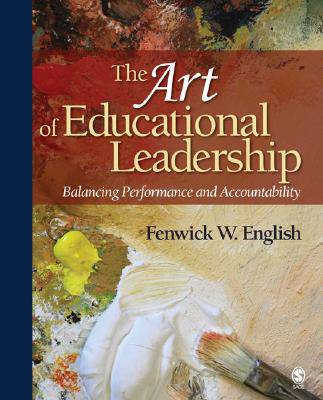
- Retrait gratuit dans votre magasin Club
- 7.000.000 titres dans notre catalogue
- Payer en toute sécurité
- Toujours un magasin près de chez vous
- Retrait gratuit dans votre magasin Club
- 7.000.0000 titres dans notre catalogue
- Payer en toute sécurité
- Toujours un magasin près de chez vous
The Art of Educational Leadership
Balancing Performance and Accountability
Fenwick W EnglishDescription
"English successfully challenges the established educational community to rethink the current state of research on school leadership in the social sciences...The inclusion of theory, discourse, and stories of recognized leaders followed by chapter learning extensions that include key concepts, movie recommendations, and prompted reflective journaling makes this book a most valuable resource for the educational leadership community." --H.J. Bultinck, CHOICE
"The Art of Educational Leadership provides one of the most complete examinations of leadership that I have encountered. I admire the way it urges students to think and reflect. The format allows individual learners to focus on those materials that best fit their learning style while the numerous presentations of a single topic through the different modalities strengthens the learning. This text is a fresh, new look at leadership..."
--Louise L MacKay, East Tennessee State University
"Fenwick W. English returns to themes of leadership he explored in more than 20 earlier books and dozens of presentation to educator audiences. He favors "re-centering educational leadership in the humanities," rather than acting on the recommendation of the business literature, and he emphasizes the use of films as a way to humanize leadership concepts."
--THE SCHOOL ADMINISTRATOR
"Excellent cogent analysis of key concepts of leadership are presented in a reader friendly style."
--Saul B. Grossman, Temple University
Moves beyond established notions of leadership to recognize that effective leading is about drama and performance--artistry!
The Art of Educational Leadership Balancing Performance and Accountability stresses the human side of leadership. No other text on this topic demonstrates so ably the importance of artistry in leadership in a field that has been lopsidedly dominated by concepts informed by science.
Presenting the idea that leadership is an art, this book:
- Exemplifies a balance between the science and the art of educational leadership: The real improvement of practice is rooted in the art of application, which is about context and represents the key to leadership practice.
- Connects content material to self-discovery: Exercises at the end of each chapter include creating a personal, reflective journal to engage the reader in and reflect upon theories and practices presented in the book. Films are suggested for viewing to illustrate the interaction between context, culture, decisions, and outcomes.
- Portrays multicultural leadership in action: Biography boxes throughout the book share how multicultural educational and political leaders who have been recognized as "expert" practitioners learned the art of leadership in the public arena.
This is the first book in educational leadership to sketch out a balance between the science and the art of the field. The text illustrates how performance and practice represent the art, while the delineation of the skills and conceptual models represent the science.
Spécifications
Parties prenantes
- Auteur(s) :
- Editeur:
Contenu
- Nombre de pages :
- 248
- Langue:
- Anglais
Caractéristiques
- EAN:
- 9780761928119
- Date de parution :
- 14-08-07
- Format:
- Livre broché
- Format numérique:
- Trade paperback (VS)
- Dimensions :
- 188 mm x 231 mm
- Poids :
- 426 g

Les avis
Nous publions uniquement les avis qui respectent les conditions requises. Consultez nos conditions pour les avis.






